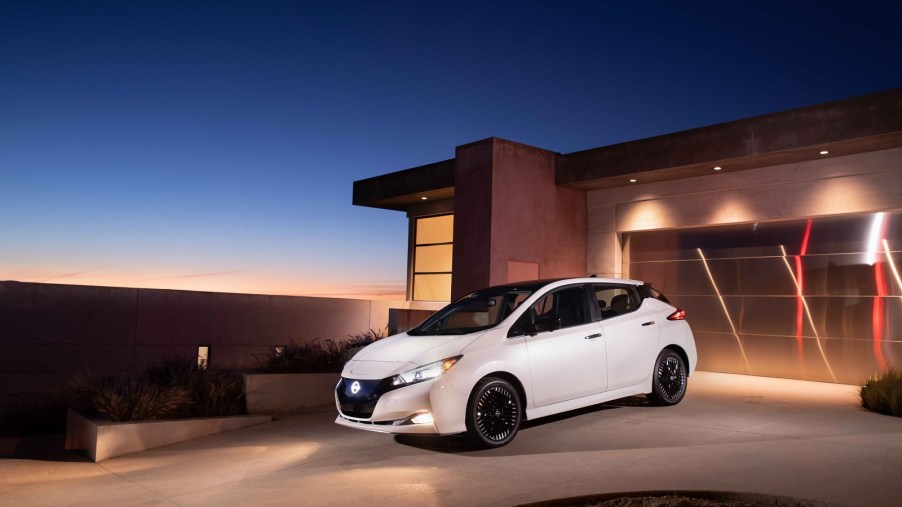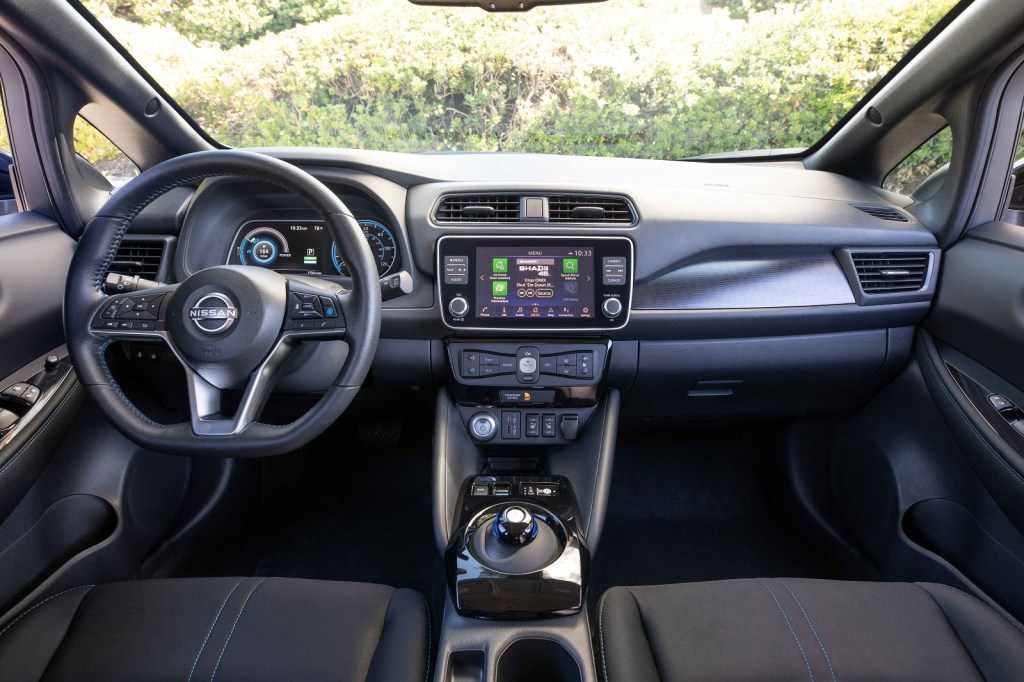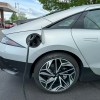
The 2024 Nissan Leaf is More of an Errand EV Than Daily Driver
Give credit to where it’s due — the Nissan Leaf is an extremely important player in the modern automotive landscape. The Leaf became the first mass-produced, affordable EV when it hit showrooms in 2011. As such, it introduced zero emissions driving to the masses. But as the EV industry drives forward, the Leaf has been effectively left behind. I recently drove the 2024 Nissan Leaf SV Plus to review, and while it still has some strong characteristics, it’s showing its age.
For starters, the Leaf’s range is now lackluster. The standard models’ 40-kWh battery pack and 147-horsepower electric motor deliver 149 miles of range, according to the EPA. The SV Plus’ 62-kWh unit delivers 212 miles of range with its more powerful 214-horsepower motor. For comparison, the base Hyundai Kona Electric SE delivers 200 miles, and the 2023 Chevrolet Bolt achieves 247 miles.
The Leaf’s 50-kW charging capacity also trails the pack against its closest competitors. The Bolt’s is slightly higher at 55-kW, while the Hyundai has a max rate of 100-kW. More importantly, the Leaf’s CHAdeMo fast-charging port limits its connectivity with many fast chargers. To note, the Leaf does support 110V charging. That means there’s no added investment into a home charger for routine re-juicing, so long as you don’t need much more range the next day. I plugged in my Leaf tester to a 120V outlet for a little over 12 hours, increasing its estimated charge from 35 to just 54 percent. It’s called “trickle charging” for good reason.
The Leaf’s interior styling also shows the model was last overhauled in 2018. Though, it’s easy to appreciate a flank of legitimate buttons and knobs versus touchscreen controls.
There’s another reason the Leaf feels a bit outdated — it’s reportedly being phased out. Production has already ended in the UK, and it’s expected to be discontinued from the U.S. market soon.
Still, the Leaf has its strong suits, particularly its price. With Chevrolet discontinuing the Bolt, the Leaf is now the most affordable EV available with a starting MSRP of $28,140. The SV Plus’ added power and range tack on a considerable sum to $36,190, but the model remains one of the cheapest all-electrics at that price.
There is value baked into that cost, as well. All models are fitted with a long list of safety features, including forward/rear automatic braking, lane-keep assist, blind-spot warning with rear cross-traffic alert and blind-spot intervention. An 8-inch touchscreen, four USB ports Apple CarPlay and Android Auto connectivity and keyless entry/push-button start are also standard. Upgrading to the SV Plus adds heated front seats, a heat pump, navigation, a leather-wrapped and heated steering wheel, and six-speaker audio. Additionally, range-topping models sport a surround-view camera system, adaptive cruise control and ProPilot Assist, a semi-autonomous driving system.
The cabin is spacious for front passengers. Rear legroom is a bit tight for adults, but kids will have no issues in the back. The Leaf’s tall roof provides ample headroom, and gives it excellent forward visibility. The cargo area is impressive. Its deep, starting well below the liftover height, and a wide entry eases the loading process. The Leaf can accommodate some items the beguile its small overall dimensions.
So long as they’re in the back. In-cabin storage is extremely tight. The center console couldn’t accommodate a notebook, one that fits in my back pocket, without bending. The door pockets can hold a large water bottle but not much else. There’s a little cubby for your cell phone, but that’s all that fits.

Ride quality and overall comfort are respectable. Passengers will feel road imperfections, but they don’t exactly spoil the ride.
The Leaf is one of the nosier EVs available. Its electronic whine under braking is pervasive in the cabin, but at cruising, most outside noises are well muted. Acceleration is quick off the line, and the Leaf has respectable passing power. There’s also a one-pedal drive mode, though that and the “Eco” mode are the only means to adjust regenerative braking settings.
Overall then, the Leaf is generally easy to live with, provided its driving duties are limited given its unimpressive range and mediocre charging abilities.
As such, the Leaf seems well suited as an errand runner for buyers who have another car in the garage. Either an ICE or hybrid for longer trips or an EV with better range and charging capabilities. Or, its an option for those, like me, who work from home and rarely venture too far from “the office.” Perhaps it’s also well suited for retirees who don’t commute and have the grandkids come to visit them.
To review, the 2024 Nissan Leaf won’t appeal to everyone. Perhaps even less so to those who are well-versed in EV ownership. However, for buyers who don’t mind a subpar driving range and some charging foibles, the Leaf can serve as an agreeable compact all-electric for getting around town.
While it’s still available, at least.



